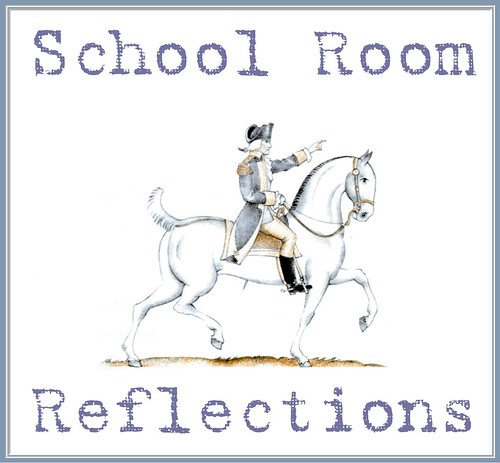For some children in my family, math has been a breeze. For them, manipulatives were just a fun addition to a lesson, like a nice illustration in a book – nice but not essential. For Michelle, who is totally right-brained, math without manipulatives just doesn’t work. Putting dollar signs in front of numbers doesn’t look like money to her, fractions without an object to divide into parts are abstract concepts that seem unimportant and useless.
Twenty-one years ago, when I was pregnant with my first baby, I read a biography of Maria Montessori. I was fascinated by her story and what she discovered about the use of chunky letters and other manipulatives in the classroom. At the time, there was very little help for children with disabilities. She dedicated herself to helping young disabled children learn to read. My kids have never attended a Montessori school, but I believe that at least initially they were known for their success in teaching early reading and the use of manipulatives to teach younger children. These days, toy stores have lots of toys with letters and there are many options.
Letter magnets – tried and true. Simple letter magnets are inexpensive and work just as well as a fancy toddler-type computer. I’ve always kept letter magnets on my refrigerator, they’ve moved from one home to another. My toddlers would be kept entertained with them in the kitchen while I fixed meals, though I do remember the daily cleanup of letters off the floor. I tried to keep them stimulated and moving about, and the letters kept them busy and out of trouble for a few minutes. Some of these are the same letters I bought for my daughter many ago, still in use today. When I went to take a picture of them, I was hoping there would be something interesting to see - I found a souvenir from a recent visit of one of our little friends who decided to leave her mark, love the “j”!
Cuisinaire Rods – Great for explaining arithmetic concepts, especially multiplication, division, and fractions. We have a couple of teacher guides with creative ideas on how to illustrate concepts, making letter and animal shapes… fun.
Lauri Pegs **– Can be used much like the rods, but they are a bit bigger in size and easier for younger kids to handle. My kids have used these to play all sorts of imaginative games. The pegs can be vegetables or people according to whatever catches their fancy. I remember Michael used them as Veggie Tales toys, several green ones piled up were Larry and Bob was one red peg. Emily wouldn’t dream of turning them into vegetables, to her they are people – the stacked up, tall ones are parents and the little ones are kids. After her work was done today, she knew she would get to play with the pegs. She was happy.
A Barrel of Monkeys – this is a great favorite, they are a much cheaper option than some of the ones designed as manipulatives.
Lauri Puzzles ** my kids loved all of the foam-chunky puzzles this company produces. This is just one of the ones we use.
Cuisinaire Clock - I don't know if other companies make a clock like this one. It really helps that it has the minutes printed in blue. The hands are moveable, and it is pretty sturdy. It seems like math curriculum authors all have agreed that the hour hand should be red and the minute hand blue, at least I've always found that the clock pictures in our math worksheets all match with this clock. It makes things easier when teaching time.
Beans & Grains – We’ve used them in the pre-k and kindergarten years for sorting and counting. They are wonderful for little ones to develop fine motor skills. I would use a hot glue gun to stick one of each type in individual cups – like the ones that come with children’s cold remedies.
Modeling Clay - Of course, there are many uses for this one. I've always made big clay letters for pre-reading activities. This really intrigued my kids, another way to motivate them to be interested in letters.
Fake and real money – playing shop is one of the best ways to teach money. I think I dimly recall doing that in kindergarten myself, forty years ago.
** I've linked the Lauri products I posted about to the My Father's World curriculum site. That's where we bought ours from, at the Florida homeschool convention. I like their curriculum for Kindergarten and 1st grade. Also, I don't receive anything from My Father's World or any other curriculum vendor. Whatever I've listed is this is free advertising for them, just because I like their products. – making letters with modeling clay when my son was two years old, may be what ignited his unquenchable thirst for letters. By age three, he was reading fluently.























I'm looking forward to researching Maria Montessori for my piano pedagogy class, Mom. :) When I saw her name on the list(along with B.F Skinner! =[, I remembered how you had mentioned her a long time ago.
ReplyDeleteWell, you've already read some of that nasty Skinner stuff. Montessori will be a more useful and interesting learning experience. :)
ReplyDeleteStopping by from BMBF!
ReplyDeleteYou may not know it but you're very CREATIVE!!
What an awesome blog you've got here!
I am now following you! Stop by if you like.
Have a great day!
B